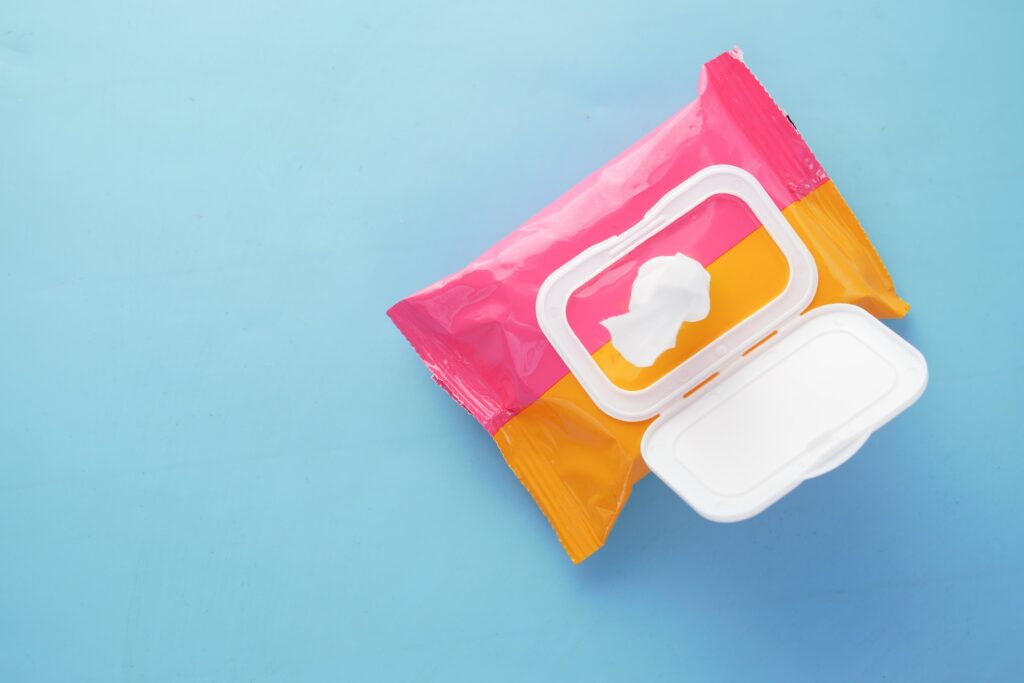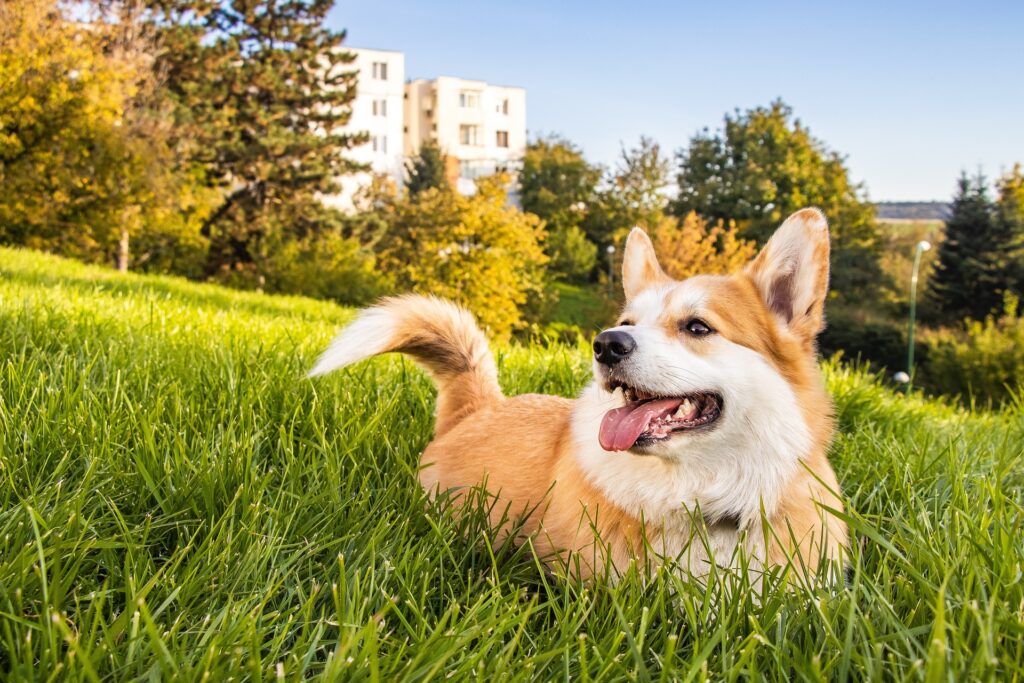Dog owners often feed their dogs bananas. And why not? It’s a delicious and very healthy treat. But what would happen if your dog ate a banana peel?
When a dog eats a banana peel, it can cause digestive health issues. While small amounts may pass harmlessly, larger amounts can lead to blockages. If your dog ingests one, monitor for any signs of discomfort and contact your vet for guidance. There are a few other things you should do first.
- What is the nutritional value of banana peels, and can dogs safely eat them?
- What are the possible effects on dogs’ health after consuming banana peels?
- What are some safe and healthy alternatives?
- What are some tips and strategies to prevent dogs from accessing banana peels?
- What to do if your dog eats a banana peel?
What is the nutritional value of banana peels, and can dogs safely eat them?
Bananas contain a lot of valuable nutrients for dogs, but not many people know that peels are also nutritious. Banana peels contain vitamins B6 and B12, potassium, and dietary fiber. Even though fiber is healthy, it is in very high amounts and poses the problem of causing a blockage in the intestines. That’s why banana peels are harmful to dogs. The same thing would happen if, for example, your dog ate a string from a rope toy. So you should keep an eye on what your dog ingests.
What are the possible effects on dogs’ health after consuming banana peels?
The banana peel is not toxic to dogs, so you don’t have to worry that your dog will get intoxicated. However, if it manages to eat one, your dog will experience immediate symptoms afterward.
The first symptom will be vomiting followed by an upset stomach. Changes in the stool like diarrhea or constipation are also common. If your dog has diarrhea at night, it might have eaten a banana peel in the evening.
If a real blockage occurs, the dog might become lethargic, start drooling, and feel heavy abdominal pain. At this point, the dog will also avoid eating any food. This requires an imminent visit to the veterinarian for assistance.
What are some safe and healthy alternatives?
Instead of feeding dogs banana skins, opt for dog-friendly treats like carrots or apple slices. These alternatives are not only safe but also offer nutritional and health benefits to your canine companion.
Many fruits and vegetables are suitable for dogs, including blueberries, watermelons, sweet potatoes, and green beans. All of these should be included in your pet’s diet on a regular basis. During summer, some fruits can also be frozen and given to dogs as a replacement for ice cream.
Always remember to introduce new treats gradually and in moderation, observing how your dog reacts to them. The People’s Dispensary for Sick Animals recommends:
| It’s always best to change the food gradually, over a couple of weeks. This may seem like a long time, but it’s best to be patient to avoid any problems. Never change their food suddenly unless you are advised to do so by your vet. This is because sudden changes to diet can cause a tummy upset or even diarrhoea, and for some pets it may make them less likely to eat the food offered to them. |
What are some tips and strategies to prevent dogs from accessing banana peels?
Now that you know that dogs can get sick from eating banana peels, you need to learn how to prevent that behavior in the future.
Keep banana peels out of reach
Whenever you eat bananas, throw the peel in a secure bin that your dog can’t access. You can restrict your dog from entering the room with the bin by putting up a fence. You can also use dog-safe locks to lock up any place that your dog likes to rummage through.
If you just bought fresh bananas, place them on a high shelf, in the fridge, or in a fruit bowl that your dog can’t reach. Make sure you properly dispose of any food that has begun to rot as this can cause bigger problems for dogs if ingested.
Communicate with your family
Educate all family members about the potential risks of feeding inappropriate foods to dogs, including banana peels. Tell them why you keep certain foods away and show them how to properly feed your dog. Spend some time with your kids to thoroughly explain their responsibilities around their furry friend.
If you have friends over, make sure to go over simple rules about keeping your pup safe. Sometimes they will want to offer a treat that may harm the dog.
Train your dog
Because dogs can not eat banana peels, they should be taught how to avoid eating them. Use obedience training to teach your dogs simple commands like “leave it” and “stay”. Use positive reinforcement during training to make sure it’s effective. You can offer some treats or praise whenever your dog follows your commands. If you find yourself in a situation where your dog encounters a banana peel, using the learned commands will work.
If you have a dog that doesn’t listen to you, you can always hire a professional dog trainer to help you.
What to do if your dog eats a banana peel?
You must stay calm and collected. Monitor the situation and collect all information you can. If possible, take the banana peel out of your dog’s reach and check if it ingested some at all.
Once you are sure that your dog ingested some parts of the banana peel, contact your veterinarian. Tell the vet about the amount of banana peel eaten, the breed of the dog, and if there are any symptoms present at the moment. Sometimes, you will need to bring the dog to their office for further diagnostics and treatment.
If it’s nothing serious, you will be tasked to keep an eye on the dog and come back if any symptoms develop. If the situation becomes worse, the dog will need to be diagnosed properly.
What happens at the veterinarian’s office?
Treating dogs after eating banana peels sometimes requires a lot of work. In the beginning, your vet will do a thorough physical exam and schedule your pup for an x-ray or ultrasound. With this, they will find where the blockage is and can start planning its removal.
Inducing vomiting is sometimes an option but it shouldn’t be done home by the owner. Experienced vets might try this technique to get the peel out of the dog. If it doesn’t work, the other option is surgery.
After surgically removing the banana peel, your dog will need to be hospitalized and stay for a few days. During these days, it will recover while being monitored for complications. After this, you can take your pup home and be more careful with the food around it.
“Outcome for animals with GI foreign body obstruction is good if the condition is recognized and treated quickly. Animals with severe clinical signs resulting from systemic factors such as concurrent infection or debilitation, hypovolemia, and shock are at higher risk of delayed healing and incisional breakdown.”, says Dr. Thomas W. G. Gibson, for the MSD Veterinary Manual.
So what can you do if your dog ate a banana peel?
While dogs can technically eat banana peels, it’s best to avoid giving them this fibrous treat. Bananas are quite nutritious and beneficial for dogs. However, the potential risks of gastrointestinal issues and exposure to harmful substances make banana peels an unsafe choice for our canine companions.
If your dog already ate a peel and is showing symptoms, ask for help from a vet. They will instruct you on how to proceed and help treat your dog. And make sure this doesn’t happen in the future.
Instead of giving banana peels to your dog, focus on providing a balanced and nutritious diet, including safe and dog-friendly treats.
FAQ
Can dogs eat other fruit peels?
Yes, for example, apple skin can be a great snack for dogs. It is crunchy, filling, and nutritious, so your dog will enjoy having it as a treat. That said, orange peels are bad for dogs and should be avoided.
Is there a specific dog breed that banana peels don’t affect negatively?
No breed is safe from the negative effects of eating banana peels. However, if a small dog ate a banana peel, the symptoms can be worse and appear sooner due to its small intestines.
Are there any fruits that dogs can’t eat?
Yes, dogs can not eat avocados, grapes, cherries, and tomatoes. Other foods toxic for dogs include onions, garlic, macadamia nuts, and almonds, for example.
More dog health resources
Here are a few other resources talking about dog health.
- Why are my dogs balls black
- Pink spot on dogs lip
- How fast does pumpkin work for dog diarrhea
- Valerian root dosage for dogs
- Why do dog leave odorless wet spots
You can find a lot more information on how to keep your dog healthy on our site Dogisa!
What To Do If Your Dog Ate A Baby Wipe: Advice And Solutions
Dogs like to chew on things and sometimes they will get their chompers on something…
Why do Dog Leave Odorless Wet Spots? And how to treat them
It is not uncommon for dog owners to notice that their dog leave odorless wet…
Why Does My Dog Only Have Diarrhea At Night? [How To Help]
Diarrhea is not an uncommon thing and most dogs will suffer from it at least…
A Complete Guide To The Corgi Heat Cycle [+ Tips]
Going into heat is what we refer to when we talk about periods in dogs….
Should I Feed My Dog Before Or After A Walk? [Simplified]
Of what we know of dogs, they love two things, eating and walking. These two…
Dog Ate Tampon – How Long Will It Take To Pass Easily?
Dogs are curious creatures by nature, and it’s no wonder that they scout for inedible…







